Sweeping Infinities Under the Rug—or Renormalization
Having dealt with internal contradictions in the previous section (see Physics of Tzimtzum I — The Quantum Leap and Physics of Tzimtzum II — Collapse of the Wave Function), we are left with another problem—infinity. Although G‑d concealed His self-contradictory nature by “sweeping paradoxes under the rug” in the process akin to the collapse of the wave function, the Light of the Infinite (Ohr Ein Sof) filled the whole of existence with infinite Divine emanation. This infinite radiation left no room for any finite creation to emerge. What was G‑d to do? Having aced the exam on quantum field theory with flying colors, G‑d employed the favorite trick of theoretical physicists in sweeping infinities under the rug using what is called “renormalization.”[1] Roughly speaking, renormalization solves the infinity problem by adding a negative infinity[2] to the positive infinity to cancel it out.[3] This is what G‑d did.
Renormalization
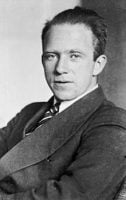
The first quantum field theory was quantum electrodynamics (QED), developed by Paul Dirac[4] in the 1920s as he made quantum mechanics compatible with the special theory of relativity. Other physicists who contributed to the formulation of QED include Wolfgang Pauli,[5] Eugene Wigner,[6] Pascual Jordan,[7] Werner Heisenberg,[8] and Enrico Fermi.[9] Richard Feynman called QED “the jewel of physics.” Indeed, QED predicted the first known anti-particle—a positron—and the Lamb shift of the energy levels of hydrogen. It is the best-tested and most airtight scientific theory.
By 1937, Oppenheimer[10] and others noticed that infinities had started to creep into the computations. The early enthusiasm for quantum field theory gave way to pessimism about its prospects. Infinities made no sense, and there was no known way to get rid of them.
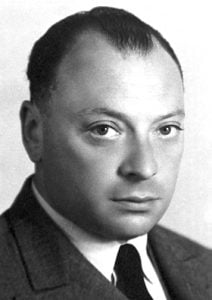
In the following decades a technique for taming infinites was developed by a number of physicists, namely Hans Bethe,[11] Shinichiro Tomonaga,[12] Julian Schwinger,[13] Richard Feynman,[14] and Freeman Dyson.[15] This technique was named renormalization and, roughly speaking, it involved adding negative infinities (“counterterms”) to cancel out positive infinities.

In quantum electrodynamics (QED), the computed charge of the electron diverges, i.e., becomes infinite. The reason is that the electron charge that enters initially into QED is a “naked” or “bare” charge. However, according to QED, electrons can emit (and absorb) virtual particles, which can have any energy. Virtual particles owe their existence to the Heisenberg uncertainty principle. The product of uncertainties in measuring energy and the time interval in which we measure it must always be greater than half of the reduced Planck constant.[16] The Heisenberg uncertainty principle allows the borrowing of some energy E for the period of time t so long as their product is greater or equal to the reduced Planck constant ћ. In other words, you can borrow some energy from the host particle so long as you repay it back in time. Virtual particles do exactly that—they temporarily borrow some energy from the host particle (which becomes the energy of the virtual particle) and then “repay” it by being reabsorbed by the host particle (or another real particle).
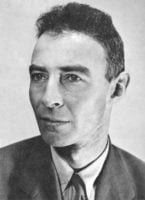
Thus, every electron (and every particle of matter) is surrounded by a cloud of such virtual particles. If we try to account for all of them, the total charge of the electron becomes infinite. By redefining the charge of the electron as the “total” charge that includes the energy of all surrounding virtual particles and setting it to the value obtained experimentally, we can allow the bare charge to diverge to infinity knowing that this infinity will be canceled out by the “negative” infinity of the virtual particles, producing a finite result. This is the essence of the renormalization procedure.
Tzimtzum—Sweeping Infinities Under the Rug
While it was the Ari who developed the doctrine of Tzimtzum and made it the cornerstone of the Lurianic Kabbalah, earlier, less radical versions of Tzimtzum were known to Kabbalists from much earlier times.[17] We find the earliest albeit veiled hint at the Tzimtzum in the Book of Bahir:
One verse (Job 37:21) states, “And now they do not see light, it is brilliant (Bahir) in the skies . . . [round about G‑d in terrible majesty].”
Another verse, however (Psalms 18:12), states, “He made darkness His hiding place.” It is also written (Psalms 97:2), “Cloud and gloom surround Him.” This is an apparent contradiction.
A third verse comes and reconciles the two. It is written (Psalms 139:12), “Even darkness is not dark to You. Night shines like day—light and darkness are the same.”[18] (Sefer HaBahir 1)
Compare this passage with a parallel passage found in the Zohar:
At the head of the King’s authority
He carved out of the supernal luminescence
Botzina de Kardenuta (a “Lamp of Darkness”).
And there emerged out of the Hidden of Hidden—
the Mystery of the Infinite—
an unformed line, imbedded in a ring…
measured with a thread . . . [19] (Zohar 1:15a)
As Rabbi Aryeh Kaplan states in his introduction to The Bahir, the above quotation from the Zohar is a direct reference to the Tzimtzum.[20] The Botzina de Kardenuta or the “Lamp of Darkness” mentioned in the Zohar is parallel to the verse “He made darkness His hiding place” quoted in the Bahir. A further statement from the Bahir, insisting that “light and darkness are the same,” reveals that the darkness mentioned in the same passage earlier (as well as the Lamp of Darkness of the Zohar) is also a Divine emanation that appears to us as darkness.
For us, darkness is just an absence of light. However, in Bahir’s and Zoharic metaphors, darkness is an allegory for the negative emanation, that is, negative infinite radiation,[21] as it were, that cancels out the positive infinite emanation, just as renormalization does in quantum field theory. Botzina de Kardenuta, or the “Lamp of Darkness,” plays the role of the “counterterm,” which is used in quantum field theory as a negative infinity—the compensating mechanism in the procedure of renormalization.
In physics, just as in Kabbalah, renormalization is used to cancel (hide) infinities. Discussing infinities arising in quantum field theories, the 1965 Nobel laureate Richard Feynman described renormalization as “sweeping them [infinities] under the rug”:
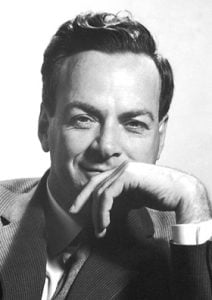
What the three [1965] Nobel Prize winners did, in the words of Feynman, was “to get rid of the infinities in the calculations. The infinities are still there, but now they can be skirted around . . . . We have designed a method for sweeping them under the rug.”[22]

Another Nobel laureate, Paul Dirac, who developed the first relativistic quantum field theory, quantum electrodynamics, where these infinities first arose, wrote in a similar vein:
Hence most physicists are very satisfied with the situation. They say: “Quantum electrodynamics is a good theory, and we do not have to worry about it any more [sic].” I must say that I am very dissatisfied with the situation, because this so called [sic] “good theory” does involve neglecting infinities which appear in its equations, neglecting them in an arbitrary way. This is just not sensible mathematics. Sensible mathematics involves neglecting a quantity when it turns out to be small—not neglecting it just because it is infinitely great and you do not want it!”[23]
Similarly to the renormalization procedure in quantum field theory, Tzimtzum sweeps the infinities under the rug.
Renormalization—A Deeper Dive
So far, we have spoken about renormalization on a very high level. From twenty thousand feet in the air, the parallel between renormalization, as used in quantum field theory, and Tzimtzum, a doctrine in Lurianic Kabbalah, seems to hold, in that both deal with infinities that cancel out a positive infinity with a negative infinity. What if we take a deeper dive and consider some of the details—will the parallel still hold?
On a more technical level, renormalization involves redefining coupling constants such as electric charge and mass. As explained above, in quantum field theory, every particle is surrounded by a cloud of virtual particles that borrow some energy from the host particle based on the Heisenberg uncertainty principle. These virtual particles contribute to the total energy and charge of the host particle. However, the original version of QED did not take them into account; only the “naked” or “bare” charge (that is, the charge of the electron itself), without any contribution from the surrounding virtual particles, was considered. When calculated based on the equations of the QED, this charge diverged into infinity. The proposed solution was to redefine the charge as an effective charge that included not only the “naked” charge but also the contributions of the surrounding virtual particles. This charge was set by hand to the experimental value while allowing the “naked” charge and the opposite charge of the virtual particles to diverge into infinities that canceled each other out.
The electric charge is the source of the electromagnetic field. Any charge, by definition, is the source of the corresponding field. Fields are not static—they vibrate, which we perceive as waves, such as electromagnetic waves. Another name for electromagnetic waves is EM radiation.
In the paradigm of Tzimtzum, we have three actors: Ein Sof, or ma’or (a “luminary”); Ohr Ein Sof, the emanation or radiation of the ma’or; and kelim (“vessels”). Ein Sof is the source (or the “charge”) giving rise to radiation, Ohr Ein Sof. In Lurianic Kabbalah, Kelim are by-products of the light.[24] Let us now compare two paradigms:
Ein Sof (luminary) → Ohr Ein Sof (light, radiation) + kelim (vessels)
Charge → field (radiation) + virtual particles.
A clear correspondence emerges: charge as the source of radiation (the vibrating field) is parallel to Ein Sof that is the source of Ohr Ein Sof. Ohr Ein Sof—radiation or emanation of Ein Sof—is parallel to electromagnetic, or EM, radiation. Kelim (vessels that get their “energy,” that is, their existence from the Light of Ein Sof) are parallel to the virtual particles that borrow energy from the host particle (in the case of QED, from the electron).
| Paradigm | Source | Radiation | Virtual Particles |
| Tzimtzum | Ein Sof (luminary) | Ohr Ein Sof (light, radiation) | Kelim (vessels) |
| QED | Electric charge of the electron | EM radiation, electromagnetic field | Virtual particles |
What happens to the kelim (vessels) as the result of the second phase of Tzimtzum? Rabbi Dovber, the Mitteler Rebbe,[25] interprets this second phase of Tzimtzum as kelim being absorbed into the source—Ein Sof.[26]
There we have it: in quantum field theory, renormalization calls for including the charges of virtual particles in the effective charge; and in the doctrine of Tzimtzum, the second phase of Tzimtzum involves (at least according to the above opinion) the inclusion of kelim (which, in our analogy, are the counterparts of virtual particles) in their source, Ein Sof, to which the original charge (as the source of the field) corresponds in the physical world. We see that our parallel holds on this level as well.
Summary
To summarize, by concealing the self-contradictory aspects of G‑dliness—nimna hanimna’ot—G‑d allows for the creation of mathematics, which cannot exist if self-contradictory statements are allowed. By concealing the infinity of G‑dliness—ko’ach beli gevul—and interfacing with us with His ko’ach hagevul (the potential for finitude), G‑d allows for the creation of physics, which cannot coexist with infinities. Thus, G‑d used Tzimtzum to conceal two Divine attributes—nimna hanimna’ot (self-contradictions) and ko’ach beli gevul (infinities)—that are incompatible with the existence of mathematics and physics and, therefore, a material world. He did so using processes that are akin to the collapse of the wave function and renormalization, which can be seen as metaphors for or structural parallels with quantum theory.
————————
Endnotes:
[1] When future Nobel laureate Lev Landau (1908–1968) became the youngest professor of theoretical physics at Kharkiv University, at the end of the first semester he failed all of his students. When summoned to the dean to explain himself, Landau said, “Only G‑d knows physics well enough to get an A. Einstein gets a B. I get a C. The only thing is left for students is F!”
[2] In mathematics, infinity can be positive or negative. In calculus, there is a positive infinity +∞ and a negative infinity −∞. We can think of infinity as a limit: limx→0 1/x2 = ∞. In other words, as x approaches 0, 1/x2 gets larger and larger—positive infinity as the limit. Similarly, limx→0 -1/x2 = -∞. In other words, as x approaches 0, -1/x2 becomes a negative number of greater magnitude—negative infinity as the limit. Strictly speaking, infinity minus infinity (∞−∞) is not defined, because infinity is not a number (it is a limit). Loosely speaking, one might say, infinity – infinity = any finite number, because n + ∞ = ∞, for any number n. In non-standard reals, called hyperreals (*R), real numbers are extended with the addition of infinite (ω) and infinitesimal (ε) quantities, such that one is the inverse of the other (1/ε = ω/1). In this number system, infinity is no longer a limit but a well-defined number (greater than any real number). If we define negative infinity as –ω = (-1)/ε. Then ω – ω = 1/ε – (-1)/ε = (1-1)/ε = 0/ε = 0. Thus, we proved that in hyperreal numbers, positive and negative infinities cancel each other exactly: ω – ω = 0. There are other similar extensions of real numbers such as super real and surreal numbers, where positive and negative infinities are well-defined and cancel each other out.
[3] One can find a popular account of the development of the technique of renormalization, for example, in Steven Weinberg, The Dreams of Final Theory (Pantheon, 1993), pp. 114–115, 118, and 148.
[4] Paul Adrien Maurice Dirac (1902–1984) was an English theoretical physicist who made fundamental contributions to quantum mechanics and quantum electrodynamics. He shared the 1933 Nobel Prize in physics with Erwin Schrödinger. He was the Lucasian Professor of Mathematics at the University of Cambridge and a member of the Center for Theoretical Studies at the University of Miami. He also lectured at Yeshiva University in New York. Dirac is considered one of the most important physicists of the twentieth century.
[5] Wolfgang Ernst Pauli (1900–1958)—Austrian theoretical physicist and one of pioneers of quantum physics. He received 1945 Nobel Prize in Physics (having been nominated by Einstein) for his “decisive contribution through his discovery of a new law of Nature, the exclusion principle or Pauli principle.” He developed spin theory, which plays a principal role in the structure of matter theory. Pauli’s paternal grandparents came from prominent Jewish families in Prague. His great-grandfather was the famous Jewish publisher Wolf Pascheles. Pauli, who was a mystic, was fascinated by Kabbalah and its relationship to the fine structure constant (one of the most important constants in physics, whose value is approximately 137, the gematria that is a numerical value of the word “kabbalah.” See my 2016 essay, “Chayei Sarah—Where Kabbalah Meets Physics” (www.quantumtorah.com/chayei-sarah-where-kabbalah-meets-physics).
[6] Eugene Paul Wigner (1900–1958)—Jewish-Hungarian-American theoretical physicist who shared the 1963 Nobel Prize in Physics “for his contributions to the theory of the atomic nucleus and the elementary particles, particularly through the discovery and application of fundamental symmetry principles.” An accomplished mathematician, he introduced group theory to theoretical physics where it became one of the cornerstones of modern physics. Wigner’s theorem contributed greatly to the mathematical formulation of quantum mechanics. Wigner receiving the Medal for Merit for his work on the Manhattan Project.
[7] Ernst Pascual Jordan (1902–1980)—German theoretical and mathematical physicist who made significant contributions to quantum mechanics and quantum field theory. He contributed significantly to the mathematical form of matrix mechanics, originally formulated by Werner Heisenberg. He was one of the early pioneers of quantum field theory. His contribution to mathematics includes non-associative algebra.
[8] Werner Karl Heisenberg (1901–1976)—German theoretical physicist and one of the founders of quantum mechanics. His is best known for his uncertainty principle and for development of matrix mechanics—one of two mathematical formulations of quantum mechanics (the other being Schrödinger’s wave mechanics) based on matrix algebra. Heisenberg was awarded the 1932 Nobel Prize in Physics “for the creation of quantum mechanics.”
[9] Enrico Fermi (1901–1954)—Italian-American theoretical physicist. Fermi was awarded the 1938 Nobel Prize in Physics for his work on induced radioactivity by neutron bombardment and for the discovery of transuranium elements. Fermi was the creator of the first nuclear reactor. He is called the “architect of the nuclear age” and the “architect of the atomic bomb.” Fermi made major contributions to statistical mechanics and formulated the statistical theory of ideal gas known as Fermi-Dirac statistics. Particles that obey the rules of Fermi-Dirac statistics (having half-off integer spin of 1/2, 3/2, 5/2, etc.) are called fermions. He predicted the existence of the neutrino and described what are now called weak interactions.
[10] J. Robert Oppenheimer (1904–1967) — Jewish-German-American theoretical physicist, professor of physics at the University of California and head of Los Alamos National Laboratory, who played a key role in the Manhattan Project and is considered one of the fathers of the atomic bomb. Oppenheimer contributed to the development of QED and was the first to predict quantum tunneling. He contributed to quantum field theory, the physics of black holes, and many other areas of quantum physics. He is considered the founder of the American school of theoretical physics.
[11] Hans Albrecht Bethe (1906–2005)—Jewish-German-American nuclear physicist who made important contributions to quantum electrodynamics, astrophysics, and solid-state physics. Bethe was awarded the 1967 Nobel Prize in Physics for his work on the theory of stellar nucleosynthesis.
[12] Shin’ichirō (Sin-Itiro) Tomonaga (1906–1979)—Japanese theoretical physicist who contributed to the development of quantum electrodynamics. He, along with Julian Schwinger and Richard Feynman, shared the 1965 Nobel Prize in Physics “for their fundamental work in quantum electrodynamics, with deep-ploughing consequences for the physics of elementary particles.”
[13] Julian Seymour Schwinger (1918–1994)—Jewish-American theoretical physicist who contributed greatly to the development of quantum field theory. He is particularly known for his work on QED, renormalization, and relativistic perturbation theory. Schwinger shared the 1965 Nobel Prize in Physics for his work on QED.
[14] Richard Phillips Feynman (1918–1988)—Jewish-American theoretical physicist best known for his path integral formulation of quantum mechanics, Feynman diagrams, and his work on renormalization of quantum electrodynamics. He also made important contributions to the physics of superfluidity and particle physics. Feynman shared the 1965 Nobel Prize in Physics for his work on quantum electrodynamics. He pioneered the field of quantum computing and introduced the concept of nanotechnology. Feynman was not accepted as an undergraduate at Columbia University in the 1930s because of its quota for Jewish students. A 1999 Physics World poll of 130 leading physicists worldwide ranked Feynman one of the ten greatest physicists of all time.
[15] Freeman John Dyson (1923–2020)—British-American theoretical and mathematical physicist, and mathematician who contributed to the fields of quantum field theory, astrophysics, mathematical formulation of quantum mechanics, condensed matter physics, nuclear physics, number theory, and engineering.
[16] The Heisenberg uncertainty principle states that Δt × ΔE ≥ ½ ћ, where Δt is the uncertainty in the measurement of time t, ΔE is the uncertainty in the measurement of energy E, and ћ is the reduced Planck constant h/2π.
[17] According to Scholem, “The basic source of this doctrine [Tzimtzum] is found in an early fragment from the circle of the Sefer ha-Iyyun (a preface to a commentary on ‘the 32 paths of wisdom’ in a Florence Ms.) which speaks of an act of divine contraction that preceded emanations…” See Gershom Scholem, Kabbalah (New York: Dorset Press, 1974), p. 129. Rabbi Aryeh Kaplan, on the other hand, traces the doctrine of Tzimtzum to much earlier sources in the Sefer HaBahir and Zohar—see Aryeh Kaplan, The Bahir (Samuel Weiser, Inc., 1979), introduction, p. xxiii.
[18] This is the English translation according to Aryeh Kaplan, The Bahir (Samuel Weiser, Inc., 1979), p. 1.
[19] The English translation according to Aryeh Kaplan, The Bahir (Samuel Weiser, Inc., 1979), introduction, p. xxiii.
[20] Loc. cit. citing Shefa Tal 3:5, Shaarei Gan Eden 2:3 (2b), Zohar HaRakia on Zohar 1:15a, Kisei Mekech on Tikunei Zohar 5 (19a), Mavo Shaarim 1:1:2, Cf. Elemah Rabatai, Eyn Kal 4:1 (25a).
[21] In the words of Rabbi Aryeh Kaplan, it is a “field of negative energy.” See Inner Light (Moznaim Publishing, Jerusalem, 1990), pp. 121, 152.
[22] “Dr. Richard Feynman Nobel Laureate!” California Tech, October 22, 1965, 67:5.5, http://caltechcampuspubs.library.caltech.edu/662/1/1965_10_22_67_5_.05.pdf.
[23] P. A. M. Dirac, Directions in Physics: Lectures Delivered During a Visit to Australia and New Zealand, August/September 1975 (Wiley, 1978), ch. 2 (“Quantum Electrodynamics,” p. 36).
[24] At first blush, it appears that the parallel between virtual particles and kelim (vessels) is rather tenuous. After all, virtual particles owe their existence to Heisenberg’s uncertainty principle, whereas no such uncertainty is to be found in the Lurianic doctrine of Tzimtzum, or so it seems. However, Heisenberg’s uncertainty principle may be interpreted as a consequence of the wave-particle duality. Wherever we have a periodic function, such as wave, the mathematical procedure called Fourier transform (which transforms the mathematical description of the waves from the time domain to the frequency domain or vice versa), the uncertainty in always there. The more we focus on the length of the wave pocket, the less we know the frequencies. The more we focus on the frequencies, the less defined is the length of the wave pocket. Heisenberg’s uncertainty principle is merely an application of the Fourier transform in quantum mechanics. In the Lurianic Kabbalah, the Divine emanation is described as ohr, that is, “light.” We can easily construct a conceptual space, in which this light propagates (makom hapanui—empty space) and use Fourier transform to define an uncertainty associated with this light. We can introduce a quantity—let us call it “metaenergy”—that is analogous to energy in the physical realm. We can then define kelim (vessels) as virtual objects borrowing this metaenergy from ohr-light in full analogy with virtual particle in quantum-mechanics. While no metaphor is perfect, the parallel between kelim and virtual particles may be deeper than first appears.
[25] Dovber Schneuri, the Mitteler Rebbe (1773–1827), was a son of Rabbi Schneur Zalman and the second Rebbe of Chabad-Lubavitch.
[26] See the Mittler Rebbe’s version of the Alter Rebbe’s discourse titled Maamar Lehavin Mah Shekasuv BeOtzros Chaim.
Keywords: tzimtzum, tsimtsum, ẓimẓum, ein sof, ayn sof, ohr ein sof, or ein sof, nimna hanimna’ot, ko’ach beli gevul, ko’ach hagevul, kelim, renormalization, quantum field theory
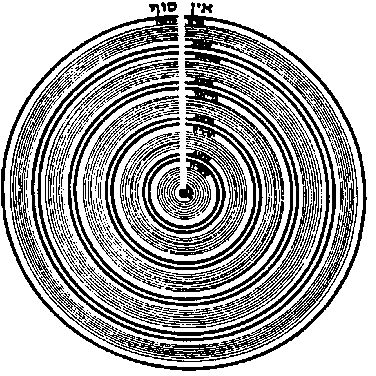
Could you comment on the concealing of the light at the end of the third day (see Rashi on the verse Gen. 1,14). Is it the energy of the vacuum? This energy is 10^120 times greater than needed for the cosmological constant. Did G-d hide this energy so that it effects the cosmos only by 10^(-120) part of it?